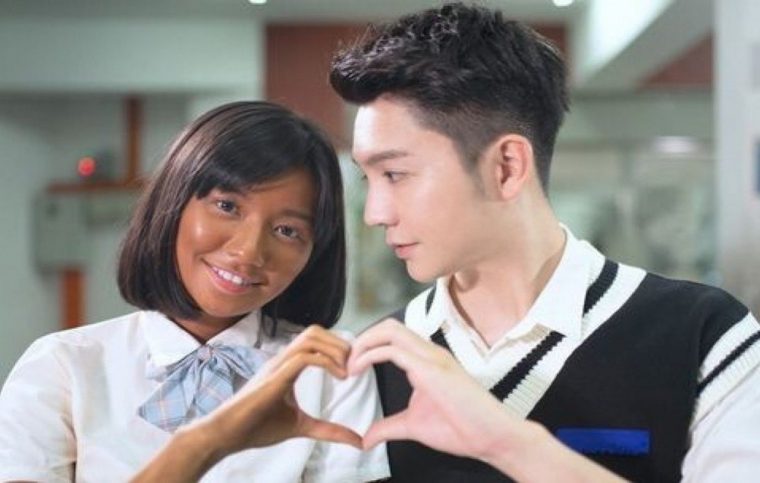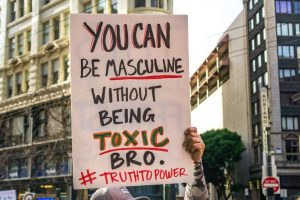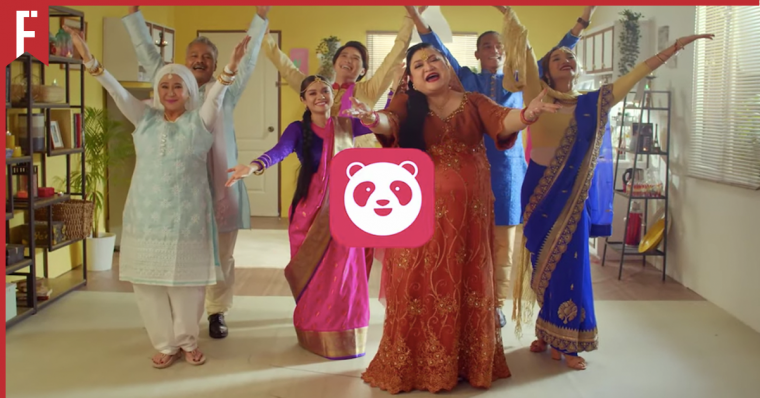
Here we go again, y’all.
Before I get into it, allow me to fill you in on the mess of an ad campaign that was recently churned out by Foodpanda Malaysia.
Earlier last week, the popular food delivery app (with an estimated audience and clientele of millions across the region, mind you) released a Bollywood-themed ad. Let’s set the scene, shall we?
The ad opens with a well-known and loved Malaysian face, Adibah Noor, clad in a lehenga-esque dress and Indian jewellery, singing joyfully to the camera.
Her voice is accompanied by the soothing sounds of the tabla, sitar, and other classical Indian instruments as she sings about the app’s features.
As she gracefully floats through a home decorated with lit oil lamps, she is joined by an ensemble of more familiar local faces dancing in time with the music, all clad in traditional Indian attire.
Visually, it’s vibrant and colourful, I’ll admit. Except there’s one detail they missed out on — there are no actual Indians cast in this ad.
*exhausted Malaysian Indian sigh*
Okay, so… whoever approved of this seems to like Indian culture and aesthetics enough to put it in a commercial, but not enough to include Indian people. Is that what it is?
We’ve seen the topic of cultural appropriation floating around social media plenty of times, yet companies don’t seem to grasp the gravity of such harmful practices.
Why is Malaysia’s media industry so adamant about using Indian aesthetics, clothes, and decorations, but don’t use Indian people to represent this? It’s not like they’re hard to find here, either!
“But they’re showcasing your culture on a national scale! Be grateful!”
No. Don’t tell me how to feel.
Why It’s A Problem
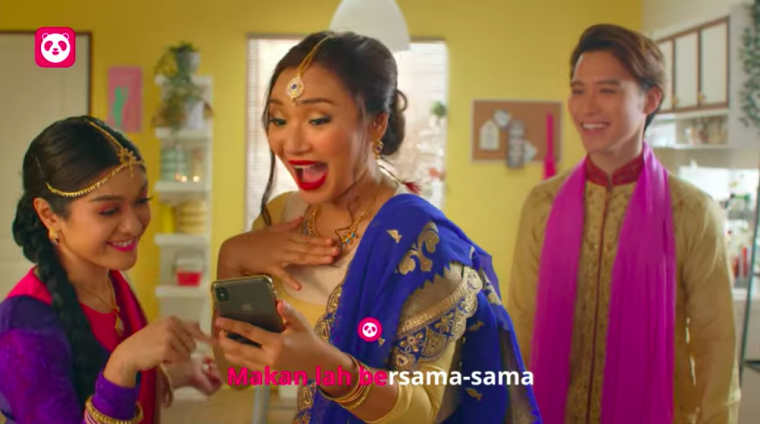
“Haiyo, why you Indians so triggered? Showing your culture also cannot!”
Let’s put it plain and simple — advertisements like this do more harm than good for many reasons. I’ll list them down here;
1. One word: Erasure

Commercials like this erase the members of this community who live, breathe, and yes, even get made fun of, for practising their culture (including its not-so-aesthetically pleasing aspects).
It’s telling society that small aspects of our culture are beautiful, but not us. Our ancient traditions can be showcased nationally, so long as it doesn’t include the people who descended from it (unless they’re there for tokenisation or comic relief! *wink*).
This may not be the intended message behind such portrayals, but that’s how it comes across to the masses.
2. It’s not representation at all
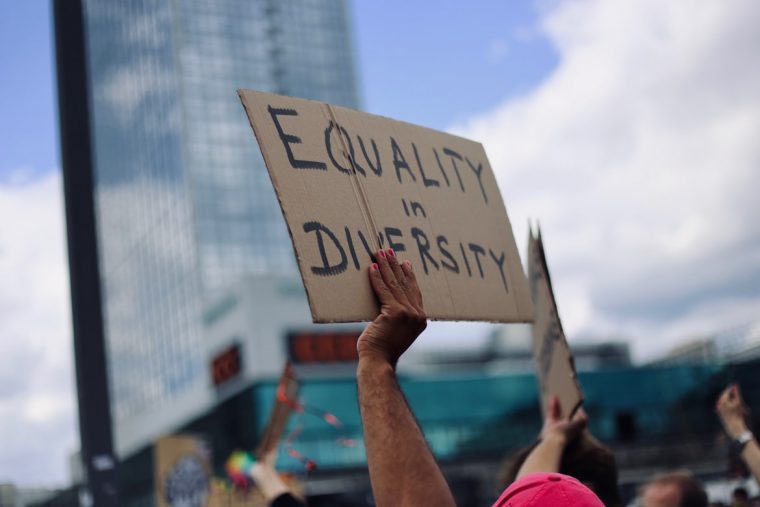
Don’t get me wrong, I have no issue with having a multi-ethnic cast wearing traditional Indian clothes. It would be the perfect opportunity to showcase a community that shares cultures and celebrates festivals together. Very #KeluargaMalaysia, right?
The thing is, for a culture to be shared, it needs to involve people who belong to that culture in the first place. Otherwise, you’re just appropriating and misrepresenting it.
3. It’s a reflection of toxic industry standards

Okay, I’m not familiar with Foodpanda’s entire creative process, but like with any advertising campaign, this would have gone through months of ideation, storyboarding, casting, planning, etc.
Throughout this time, did not one person think there was something off with doing a Bollywood-themed ad with zero Indian people in the cast? Were Indian people even involved in this process?
“But they already made it, not like they can rewind time and undo it also!”
That is true. The damage has already been done, but I think it’s important for everyone involved in this campaign to think about where they should go from here, and what impact they want to leave in the industry.
Moving Forward
In an ideal world, I think taking the following steps would be a good place to start;
1. Show how you will improve from your mistake

This doesn’t only apply to Foodpanda. It goes for any company that has misrepresented any culture or minority group.
One way to go about making amends is to release a statement addressing the community you’ve offended (in this case, it would be the Malaysian Indian community). Contrary to popular belief, acknowledging your oversights and saying sorry isn’t showing weakness. I’m not talking about “Sorry for the misunderstanding”, I mean “Sorry for offending you”. There’s a huge difference between the two.
In your statement, clearly list out actionable steps you will take to improve as a company, moving forward from this mistake. State how you are going to hold yourself accountable for these steps (i.e. show that you’re committed to diversity by employing a more diverse group of people in your creative team so they can provide different perspectives). This shows that you’re actually willing to evolve, and not just apologising to “get it over with”.
No one is perfect. We all mess up, but it’s the steps we take after making a mistake that matter.
2. Be a stronger advocate

If you’re an actor being offered a role that may be contributing to the erasure of any minority group (ethnic or otherwise), use your better judgment and refuse to take on such roles in the future.
Being an ally for minorities involves more work than merely publishing the occasional social media post. If you’re a public figure who is serious about being an advocate, you’ll need to walk the talk, too.
Change is possible if more actors and other influential figures in the industry actively practise this.
3. Don’t conflate valid criticism with “hate comments”

It’s easy to take things personally and call it “hate” when you see backlash towards something you’ve worked hard on, but if it misrepresents a certain culture and erases people from that community, you need to hear them out, regardless of how you may feel about it.
Take this as constructive criticism, and apply what you learn to your future projects. If you plan to work on a project portraying a culture you’re not too familiar with, run your ideas by focus groups or test audiences made up of people from that culture and be open to the feedback you receive.
Let’s do better
It’s 2021. It’s about time we start placing more pressure on Malaysia’s mainstream media to do better when it comes to portraying different communities, especially when we’re already in such a culturally and ethnically rich society.
The least we can do is respectfully and accurately represent these communities on the national stage.
It would be remiss of me if I didn’t mention the elements of colourism involved in Malaysian media as well, but that topic is worthy of its own article. Wait, I did write an article about colourism? Well then, you’re in luck! Check it out below:
Why Are Malaysians So Repulsed by Dark Skin?
